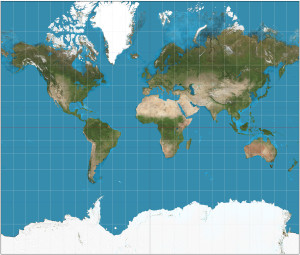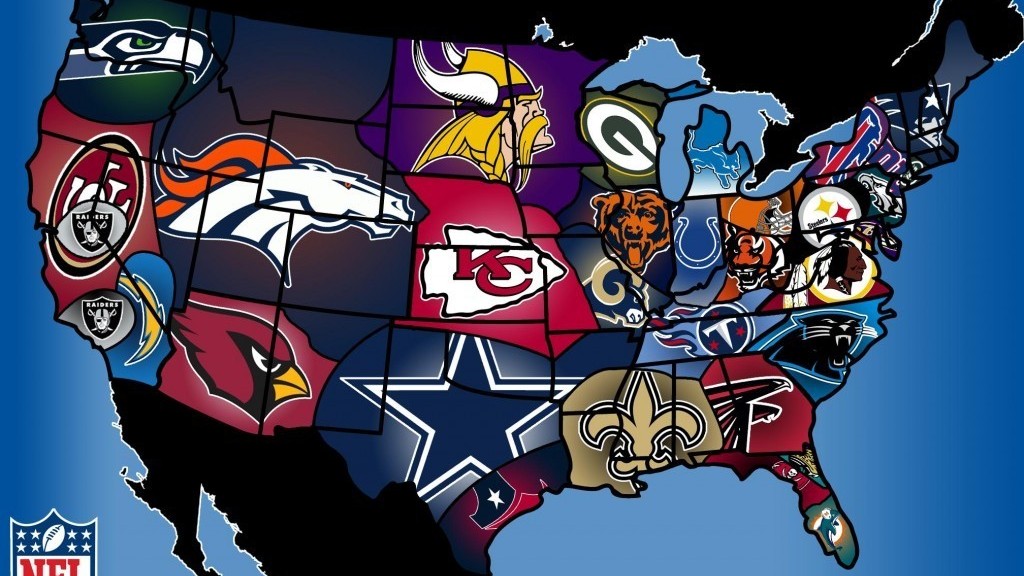Easily the best video I’ve ever seen explaining scale. Typically wouldn’t use an astronomy example but this was too good to pass up. Enjoy!
Category Archives: Intro to Human Geography
Human Geography: Alarming Fact # 10
For the last 50 years Japan has given a commemorative silver cup to each of its citizens on their 100th birthday. The number of people over 100 back then was limited but that number has exploded recently as Japan now has on average the oldest population on Earth. Japan also faces an economy burdened by a heavy national debt. Those factors have combined to cause the Japanese government to suspend the traditional gift as it has become too expensive to continue.
This site has posted previously on the increasing population crisis in Japan. To see the original post follow the link below:
Human Geography: The Declining and Aging Population of Japan
Welcome Back to School and Human Geography 2015-2016
Around the country some schools have been back in session for a few weeks, some just started, and the rest will be starting shortly. I wanted to take this opportunity to welcome all of the students that are taking AP® Human Geography this year. This website will serve as a tool for students and faculty looking for additional resource beyond what is available in the classroom or textbooks.
Last year my classroom students attained the highest pass rate in my school district’s history. I look forward to challenging that mark this year with my new crop of ninth graders.
Also, for those students needing help beyond the classroom and the resources on this site, I am available for private tutoring sessions throughout the school year. Last year every student I privately tutored passed the AP® Exam. For more information on how “The Human Geo Guy” can help you, or to contact me directly, please follow this link.
Best wishes for a great school year and lots of passing scores on May 13, 2016.
Danny Sanchez “The Human Geo Guy”
Human Geography: Alarming Fact # 9
Japan currently sells more adult diapers than baby diapers.
This might seem a bit amusing until you analyze the problems created by this fact. I have previously written about Japan’s population crisis, for a more in-depth analysis follow the link below:
The World You Think You Know

As humans we have an infatuation with straight lines. They are easy to draw and help us maintain order. Often straight lines are quite helpful: architects use them to design structurally sound buildings, cities laid out in a grid tend to have fewer traffic issues, and I have avoided many arguments between my children by cutting a piece of candy perfectly in half. Unfortunately straight lines can cause problems as well, specifically when it comes to creating a global map.
The Mercator map projection is the most commonly used map in the world. It turns the world into one large rectangle that meets perfectly at right angles across the globe. The problem, the world isn’t a giant rectangle, it’s a sphere. The equivalent would be smashing a bowling ball with a sledge hammer and then trying to sort the pieces on the floor. All while trying to make it still look like a bowling ball, physically impossible. Yet, we overwhelmingly use the Mercator map projection for no reason other than it’s easy to print.
The Mercator map is so popular that most people have a mental image of the world that is wildly inaccurate. This problem is caused by map distortion. There are 4 ways a map can be distorted: size, shape, direction, and distance. The two types of distortion most evident in the Mercator projection are size and shape. These problems become greatest near the poles. While placing the sphere on a rectangular map the edges need to be stretched out the most to maintain the straight lines. This causes an optical illusion that makes Russia, Canada, and Greenland (all already quite large in size) seem even larger.
Our friends at Buzzfeed have put together a video showing that the world looks nothing like what we have been programmed to believe. Enjoy!
Human Geography: Alarming Fact # 6
The CDC has reported that this flu season is off to an aggressive start with 22 states reporting unusually high rates. They even went as far as to declare it an “epidemic.” While most flu seasons gain “epidemic” status it is uncommon for it to happen so early in the season. Contributing to this example of contagious diffusion is a flu strand that is more aggressive than usual and a low number of people receiving the flu vaccination.
While most people don’t consider having the flu to be much more than a few days in bed the reality is that it kills thousands of people around the world each year. The worst flu strand on record lasted from 1918-1920 and killed approximately 4% of the world’s population. While it is highly unlikely that this year’s flu would reach global pandemic levels those most vulnerable to the extreme effects of the flu are the elderly, infants, and people with weakened immune systems. So if you haven’t already, get your flu shot. If it keeps you from getting sick or at the very least shortens the duration of the flu it will be a few dollars well spent. In most communities there are locations where they give the shot away for free.
Human Geography: Update on the Contagious Diffusion of Ebola in West Africa
On August 1st this site posted about the threat of Ebola in West Africa. In the two months since the worst Ebola outbreak in history has only grown. The biggest concentration of those infected has been found in Liberia, Sierra Leone, and Guinea with those countries reporting over 7400 cases and about 3500 deaths. The illness can only be transmitted through direct contact with bodily fluids otherwise the number would be significantly higher. Despite this limitation the number of new cases is doubling roughly every three weeks. Those most susceptible to contracting Ebola are health care workers due to their direct contact with the infected. The lack of basic medical supplies, such as latex gloves and masks, has created a situation where the people doing the most to combat the spread of Ebola and care for the ill have become its primary victims.
The international response to the crisis has been lacking at best. A handful of countries including Britain, China, and Cuba have sent a small number of medical professionals to help local doctors. The greatest outside support West Africa has received came from the United Stated as President Obama recently announced that he was committing the resources of the U.S. military to establish 17 field hospitals to slow down the disease. Not only is there a moral imperative to act but there is an economic one as well, the longer the world waits to deal with the issue the cost of solving the crisis becomes significantly greater.
Last week the first case of Ebola outside of West Africa was confirmed in the United States. A man from Liberia visiting his son and fiancé in Dallas checked into a hospital and was diagnosed. This singular case was identified early and is highly unlikely to create a mass infection in the United States. It has served a greater purpose by bringing more attention to the growing crisis in West Africa. Hopefully, the perception of a threat to the west will encourage the rich world to contribute more to the struggle; ideally they could begin by sending in enough gloves and masks to protect the front line of defense, doctors and nurses.
Human Geography: When Networks Fail – Efficiency vs. Resiliency
On Friday September 26th a suicidal man started a fire at the air traffic control center which directs flights in and out of Chicago’s two major airports, O’Hare and Midway. The fire did enough damage that travel in and out of both airports came to a near standstill. The man was later arrested but not before he managed to create a transportation nightmare across the country.
Chicago is not only the third largest city in the US but it also functions as a major transportation gateway linking various parts of the country. O’Hare is the primary hub for United Airlines and one of the biggest hubs for American Airlines. When flights were suspended it created a ripple effect that caused the cancellation of nearly 4000 flights across the country. Hundreds of thousands of passengers found themselves stranded or canceling weekend plans. Not only were thousands inconvenienced but the economic impact has been estimated at about $123 million.
Air travel is dependent on a vast network of planes moving continuously across the country. Planes are typically scheduled to land at a destination, unload passengers, load new passengers, and then proceed on to the next destination as quickly as possible. It is a system that has been finely tuned over the years and despite the large number of people traveling at all times it creates a remarkably high level of efficiency.
At the same time when an unexpected event causes a major disruption it shows the weakness of networks. Removing one city from the grid, even for just a few days, can disrupt the system nationally and create chaos. When people travel they don’t typically think of all the moving parts required to get them to their destination on time. This high level of efficiency comes at a price, the lack of resilience to potential delays and cancellations that can be caused by any number of things, in this instance a mentally disturbed individual.
Human Geography: NFL Fan Regions
When rooting for their favorite NFL team few football fans are considering human geography definitions but that doesn’t mean they don’t apply. A region is defined as an area that is tied together by a physical or cultural trait, supporting your favorite team can be an example of this. Earlier this week Facebook released a map they compiled using their data to identify the rooting interests of fans in each county. As you can see below, the most common pattern that emerged, not surprisingly, is that fans will root for the home team.

While a quick glance at this map would lead to the simple, and relatively accurate conclusion that fans root for the team closest to them, a deeper analysis reveals that there are several glaring exceptions to this rule and other observations of note.
- The Oakland Raiders don’t have nearly the same support as the San Francisco 49ers with whom they share the Northern California market. Their primary support base is located in Southern California where they played from 1982-1995. There is even speculation that they might move back to Los Angeles as the city is desperate to bring back an NFL team.
- The Denver Broncos have the widest land area of fans although much of that area is sparsely populated.
- The Dallas Cowboys truly live up to their nickname “America’s Team.” Not only are they dominant in a wide area immediately around them, they also have fan bases dispersed throughout the country.
- The Green Bay Packers and Pittsburgh Steelers both have pockets of fan bases around the country. Not surprising as both of these teams were highly successful in the 1960s and 1970s when the NFL saw a meteoric rise in its popularity.
- Lastly, the poor Jets. They share the New York, Northern New Jersey, and Western Connecticut market with the Giants. The Giants have always been viewed as the superior franchise and having grown up in this area I can vouch for the fact that most people consider the Jets to be an afterthought.
On a personal note, for those of you wondering who I root for, I am a fan of the Buffalo Bills. Having grown up in New Jersey and later moving to Miami I actually lived in the home areas of their biggest rivals. As I always tell my students, “exceptions don’t break rules, they prove them by standing out so much.” I assure you having lived in areas where people supported the Giants, Jets, or Dolphins not only was I an exception, but for most people, I was the only Bills fan they knew. It was not until the age of 31 that I finally befriended another Bills fan, and yes, he is originally from the Buffalo area.
Human Geography: Contagious Diffusion for a Good Cause
A few weeks ago I wrote a post warning about the growing threat of Ebola in West Africa and that it had the potential to spread rapidly through contagious diffusion. While the threat of Ebola persists I wanted to take a moment to acknowledge a positive form of contagious diffusion, the ALS Ice Bucket Challenge.
Over the past few weeks celebrities, athletes, average citizens, a former President, and even I have taken the Ice Bucket Challenge. The objective is to challenge people to donate $100 to the ALS Association or dump a bucket of ice cold water on their head and donate at least $10. It has grown wildly successful and has increased typical donations to the organization by 400% compared to this same time period last year. Social media has allowed this fundraiser to go viral and not only increase funds but awareness for the cause.
There is one aspect of this that I did find a bit concerning, perfectly fine water is being wasted when there are so many people in the world dying due to lack of access to safe drinking water. In hopes of offsetting my personal impact on the water supply, I made a matching donation to water.org and encourage others to do the same.


